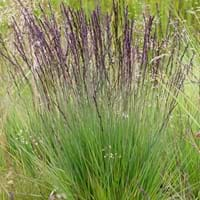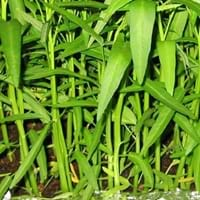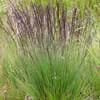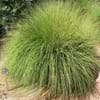Life Span
Perennial
Annual and Perennial
Origin
Asia, Europe, North Africa
India
Types
purple moor-grass 'Moorhexe', variegated purple moor-grass
Not Available
Habitat
Boggy areas, Dry and Young forest Heaths, Lowland
subtropical regions, Tropical regions
USDA Hardiness Zone
4-8
8-15
Sunset Zone
1a, 1b, 2a, 2b, 3a, 3b, 4, 5, 6, 7, 8, 9, 14, 15, 16, 17
21,22
Habit
Clump-Forming
Spreading
Flower Color
Dark Purple
White, Lavender
Flower Color Modifier
Bicolor
Not Available
Fruit Color
Non Fruiting Plant
Green, Reddish Plum
Leaf Color in Spring
Green, Dark Green
Green
Leaf Color in Summer
Light Green
Green
Leaf Color in Fall
Green, Yellow green, Gold
Green
Leaf Color in Winter
Tan
Green
Leaf Shape
Needle like
Long Elliptic
Plant Season
Spring, Summer, Fall, Winter
Spring, Summer, Fall, Winter
Sunlight
Full Sun, Partial Sun
Full Sun, Partial Sun
Growth Rate
Medium
Very Fast
Type of Soil
Clay, Loam, Sand
Clay, Loam, Sand
The pH of Soil
Acidic, Neutral
Acidic, Neutral, Alkaline
Soil Drainage
Average
Poorly Drained
Bloom Time
Late Spring, Summer, Late Summer, Early Fall, Fall
Indeterminate
Tolerances
Not Available
Wet Site
Where to Plant?
Ground, Pot
Container, Ground, Pot
How to Plant?
Divison, Transplanting, Vegetative Reproduction
Seedlings
Plant Maintenance
Low
Medium
Watering Requirements
Requires regular watering, Water more frequently during periods of extreme drought
Requires regular watering
In Summer
Lots of watering
Lots of watering
In Spring
Moderate
Moderate
In Winter
Average Water
Average Water
Soil pH
Acidic, Neutral
Acidic, Neutral, Alkaline
Soil Type
Clay, Loam, Sand
Clay, Loam, Sand
Soil Drainage Capacity
Average
Poorly Drained
Sun Exposure
Full Sun, Partial Sun
Full Sun, Partial Sun
Pruning
Prune in winter, Remove damaged leaves, Remove dead branches, Remove dead leaves
Remove damaged leaves, Remove dead branches, Remove dead leaves
Fertilizers
No need to fertilize every year
All-Purpose Liquid Fertilizer
Pests and Diseases
Pests and diseases free
Bacterial leaf spot, Damping-off, Root rot
Plant Tolerance
Not Available
Drought
Flower Petal Number
Single
Single
Foliage Texture
Fine
Medium
Foliage Sheen
Matte
Matte
Attracts
Not Available
Birds, Hens
Allergy
Not Available
Not Available
Aesthetic Uses
Showy Purposes, Water gardening
Farmland
Beauty Benefits
Not Available
Not Available
Environmental Uses
No fertilizer, pesticides, or herbicides needed
Air purification
Medicinal Uses
No Medicinal Use
Anti-ageing Benefits, Antidiabetic, Reduces toothache, Skin Diseases
Part of Plant Used
Whole plant
Leaves, Shoots, Stem
Other Uses
Used as Ornamental plant
Used in curries, soups, stews
Used As Indoor Plant
No
Sometimes
Used As Outdoor Plant
Yes
Yes
Garden Design
Container, Foundation, Mixed Border
Edible, Herb / Vegetable, Tropical, Water Gardens
Botanical Name
Molinia caerulea
IPOMOEA aquatica
Common Name
purple moor-grass
Swamp Cabbage, Swamp Morning Glory, Water Spinach
In Hindi
बैंगनी दलदल घास
Water Spinach
In German
Pfeifengras
Wasser-Spinat
In French
pourpre lande-grass
Épinards d'eau
In Spanish
púrpura amarra-hierba
La espinaca de agua
In Greek
μωβ Moor-γρασίδι
Σπανάκι νερό
In Portuguese
purple moor-grass
Espinafre de água
In Polish
fioletowy Moor-trawa
Szpinak wodny
In Latin
Maurus herba-purpura,
Water Spinach
Phylum
Magnoliophyta
Spermatophyta
Class
Liliopsida
Magnoliopsida
Order
Cyperales
Solanales
Family
Poaceae
Convolvulaceae
Clade
Angiosperms, Commelinids, Monocots
Angiosperms, Asterids, Eudicots
Tribe
Not Available
Ipomoeeae
Subfamily
Not Available
Not Available
Number of Species
Not Available
Importance of Molinia Caerulea and Water Spinach
Want to have the most appropriate plant for your garden? You might want to know the importance of Molinia Caerulea and Water Spinach. Basically, these two plants vary in many aspects. Compare Molinia Caerulea and Water Spinach as they differ in many characteristics such as their life, care, benefits, facts, etc. Every gardener must at least have the slightest clue about the plants he wants to plant in his garden. Compare their benefits, which differ in many ways like facts and uses. The medicinal use of Molinia Caerulea is No Medicinal Use whereas of Water Spinach is Anti-ageing Benefits, Antidiabetic, Reduces toothache and Skin Diseases. Molinia Caerulea has beauty benefits as follows: Not Available while Water Spinach has beauty benefits as follows: Not Available.
Compare Facts of Molinia Caerulea vs Water Spinach
How to choose the best garden plant for your garden depending upon its facts? Here garden plant comparison will help you to solve this query. Compare the facts of Molinia Caerulea vs Water Spinach and know which one to choose. As garden plants have benefits and other uses, allergy is also a major drawback of plants for some people. Allergic reactions of Molinia Caerulea are Not Available whereas of Water Spinach have Not Available respectively. Having a fruit bearing plant in your garden can be a plus point of your garden. Molinia Caerulea has showy fruits and Water Spinach has no showy fruits. Also Molinia Caerulea is not flowering and Water Spinach is not flowering . You can compare Molinia Caerulea and Water Spinach facts and facts of other plants too.





